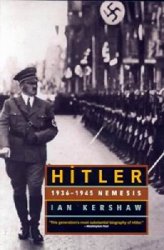Heinz Guderian was long since reconciled to the fact that he would never be able to assemble the elaborately equipped army that theorists such as Fuller and Liddell Hart had described. But Guderian was a practical man with a willingness to make things work. His knowledge and understanding of mechanized warfare exceeded that of any man in the world. His experience of staff work was long and varied, and his years of handling armored divisions gave him insights that left the paperwork of the theorists far behind. Guderian had virtually designed his tanks and sweated his way through their production problems. His job with the motorized troops had taught him about the supply and maintenance of vehicles, and in the later stages of the First World War he had worked as quartermaster behind the rapidly advancing storm troops. He also knew all about the logistic problems that had brought failure in 1914 and had commanded a military wireless station in combat conditions.
Every stage of Guderian’s career had contributed something to the technique of the blitzkrieg. When finally his armored force was committed to battle, Guderian found himself fighting to capture the place of his birth. At a time when some of the German generals were wrestling with moral doubts about Hitler’s war, Guderian was understandably single-minded and aggressive. Now Guderian, a Knight’s Cross at his neck, was to face west and fight a battle largely of his own design.
Emphasis has already been given to the vital role that radio played in the technique of the blitzkrieg, but this importance was due entirely to the way in which German commanders were prepared to change plans minute by minute in the face of enemy opposition. It is extremely doubtful if such radio contact would have made much difference to the French or the British Army, which was trained to fight systematic set-piece battles.
British General Bernard Montgomery, in a final address to his senior officers before the battle of El Alamein, said that this was to be an army battle, carefully controlled from Army HQ, but he went to bed early that night believing, according to his memoirs, that there was nothing he could do. In fact, things went wrong and his chief of staff had to wake him up and arrange a corps commanders’ conference at 3:30 a. m. This systematic approach to war was exactly what the German generals usually tried to avoid.
It is interesting in this connection to notice that according to Liddell Hart, both German and British senior commanders agreed that German soldiers were more individualistic than their opponents. General von Blumentritt went so far as to complain of this, saying the Germans’ rank and file had too many ideas of their own and were not sufficiently obedient. However surprising this might be to British readers, studies of the desert fighting supported the contention that the German soldiers were better able to improvise in emergencies than their British opponents. Another finding was that British units commonly ceased fighting after losing all their officers, but Germans remained effectively organized right down to the last few NCOs.
Guderian had proved that the First World War type of tank
Attacks, which simply pushed against an enemy front, could not be equated with the very fast columns traveling hundreds of miles into the rear areas, causing havoc everywhere they went and uncertainty everywhere else.
More than any other man, Guderian had opposed the idea of tying tanks to infantry (as the French had largely done) or creating alltank units for specialized use (as in prevailing British theories). He had insisted that the armored divisions must be versatile and equipped in hardware, training, and mental attitude to tackle almost any kind of fighting. While other armies calculated the speed of any combined units as that of the slowest element, Guderian measured by that of the fastest and insisted that his divisions move as fast as possible.
Years later, in discussion with Liddell Hart, Guderian cited mobility and velocity as the primary factors of the blitzkrieg.




 World History
World History









